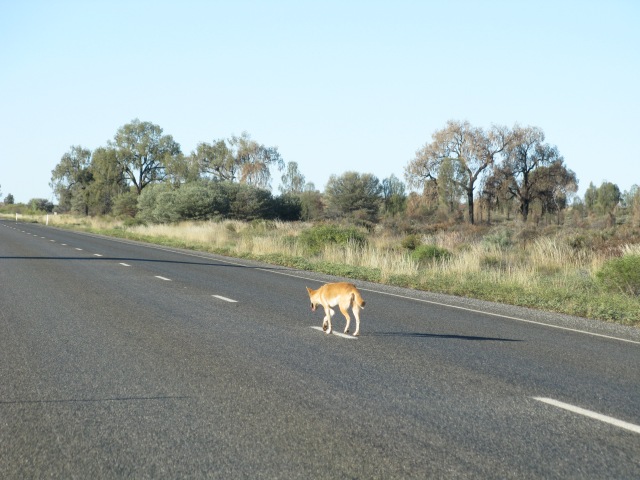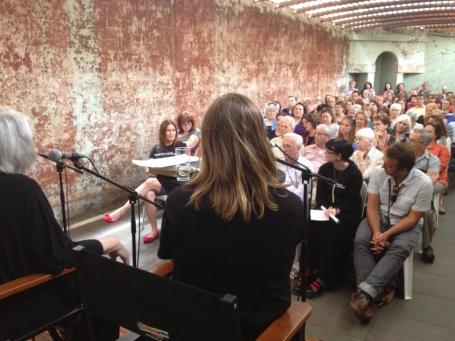With the second week we began the block of the course that focused on ‘Narrator: Self, Other and Character’. This section drew from the first part of Kim Scott’s novel That Deadman Dance (p. 7-63).
In the lecture I walked students through the trajectory of Indigenous writing in Australia, going back to David Unaipon’s Legendary Tales of the Aborigines in 1930, Jack Patten’s speech for the Aborigines Protection Association on the first national Day of Mourning, 26 January 1938, and the Yolgnu Bark Petitions in 1963. Of course, Aboriginal people were engaging with the English language from the early days of the colony and as Scott makes the point, the old Noongar man who danced with Flinders’ men on the WA beach in 1801 is one form of cultural engagement and cross-fertilization.
But as I explained to my students, Aboriginal writing in English really started with memoir in various modes of genre, Jack Davis plays and poems, Ella Simon’s memoir Through my Eyes, Kevin Gilbert’s interviews and plays, all of which date from about the 1960s through to the late 1970s.
I used Ruby Langford Ginibi’s great statement about her desire to write memoir rather than fiction:
‘I’m not interested in fiction. Don’t need to be, because I’m too busy writing the truth about my people. . . . This is from our side of the fence. . . . Although the history of the whole of white Australia is one of the biggest fictions, aye?’ (Ginibi, 1994)
to highlight how a creative choice can be (and to my mind, always is) political.
Kim Scott, who published his first novel in 1993 just a few years after Ginibi’s first memoir, argued this in ‘Covered up with Sand’:
‘I’d like to think that writing fiction is sometimes a way to explore, to rethink and possibly to retrieve or create something from between and behind the lines on the page. As such it can help the revitalisation and regeneration of an Indigenous heritage, in so far as it involves ‘shaking up’ and making space within the most readily available language—that of the coloniser—for other ways of thinking.’ (Scott 2007, p123)
I suggested to students that what Scott offers to me, a white person, here is the opportunity to think about the stories I make space for on the page. It makes me realise the power I have to subvert, pay attention to, ignore subjects, characters, modes, all the while using English to the best of my ability. I also think it opens up my thinking to Scott’s ‘ambivalences’, to write with uncertainty and experimentation and to understand that there is no singular answer, just our attempts to tell more interesting, relevant, stories of our times.
When we open That Deadman Dance, we find the prologue. We meet Wabalanginy for the first time. ‘Kaya’ (hello, yes) he writes on slate. We see Wabalanginy delighted with his new skill of written communication with the Europeans who are now staying in his country and we begin to sense what an exceptional cross-cultural communicator he is going to be:
‘Moving between languages, Bobby wrote on stone.’ (Scott, 2010 p. 1)
Wabalanginy is a sophisticated, curious young man at this point of the story. He is adept at operating in both languages and cultures and is keen to share the one with the other and back again: Wabalanginy wants to communicate across cultures.
As I was (re)reading the book in preparation for this class, I got to wondering how I might write like this.
In the first lecture I brought up the idea of ‘whiteness’, basically, the study of white privilege. But the big challenge with the study of whiteness is that we can very easily turn it into the centre of our focus. As a result, we fixate on what whiteness is and how it affects whiteys like me rather than what whiteness does, how it operates in the world outside our privilege; ie. how we create the world because of our privilege. In doing this, we run the very real risk of re-centering our study on ourselves and making us ‘the most important’ – cultural navel gazing.
Academic Alison Ravenscroft, in writing about a number of non-Inidgenous writers writing colonial histories, both fiction and nonfiction, states that:
‘… despite non-Indigenous writers’ best efforts to revise the colonial story, they nevertheless risk revitalizing it instead …’ (Ravenscroft, 2013)
In our attempts to rewrite, reimagine the early days of colonisation, we often in fact, claim significance for ourselves, and privilege our versions of the stories. In this article, ‘The Strangeness of the Dance’, Ravenscroft is also investigating why Scott’s writing is different and why it is able to do ‘different work’. She states that her endeavour is to:
‘… insist on the importance of aesthetic form: on the way a story is pushed into shape, on the form of its telling rather than only its narrative content… [and] that relying on our capacity to uncover new historical facts, new archival records or even new memories will not be enough to tell a different story. It is to argue that an emphasis on facts … but equally an emphasis on white imaginative powers risks repeating the same old story, with all the reiterations of colonial impulses that this implies.’ (Ravenscroft, 2013)
What Ravenscroft demands of us when she challenges us in this way is to confront and interrogate our own biases and look at the characters we create, the decisions we make around plot, genre, who gets to speak, and what they get to say. This interrogation is imperative whenever we are writing any character or world that is ‘other’ to us, woman or man, age, sexuality, class, place or culture. When it comes to asking ‘Who can speak?’ we need to first ask the question who is asking and why.
Now, I want to draw your attention to Scott’s writing, his syntax and his thematic interests, and how he has combined these on the page in That Deadman Dance. The first section: 1833-1835 is a flash forward of sorts – not that we realise this when we read it initially because it isn’t until we get to the second part that we go back in time. This allows Scott to foreshadow some of the drama and outcomes of the novel – we can reflect from one part to the next on what has occurred and what might still occur. This overarching structural device makes the novel as a whole dynamic, each part dependent on the other.
‘Menak’s campfire would have been invisible from the ship, yet his view took in the inner harbor, the great bay, the islands and the ship coming around the headland…. But of course a ship’s canvas wings hold the wind, and keep that wave tumbling and frothing at its sharp breast as it slices and pushes the sea aside. Such power and grace, and there is that milky scar as the sea closes again, healing.’ (Scott 2010, p12)
This opening paragraph is about Menak, the Noongar elder. We see him by himself in the landscape, a specific place, and we hear him wondering about the white people (the ‘horizon people’) who come and go, and their effect on the Noongar and the environment. Just from this one paragraph we know that Menak sees everything, that he can remain invisible in the landscape, that he imagines the ‘after’ of when the white people will have gone away, the ‘healing’, and that bodies or body parts are ever-present – ‘sharp breast as it slices’, ‘scar’, ‘healing’ – in his thinking. We know he is connected to the land and sea in different ways to the Europeans.
This section is also when we hear at length from non-Noongar people – Chaine, Skelly, Killam and Cross, in particular.
‘Geordie Chaine gripped a timber rail caked with salt, his nerves as tight as any rigging, and speared his attention to the immense grey-green land beyond the shore. Empty, he thought. Trackless. Waiting for him.’ (Scott 2010, p15)
I think it is useful for me as a writer to look at what Scott has done here. This is Chaine’s introduction but in fact, we have already met Chaine in the prologue and know that he develops a relationship with Wabalanginy. Here Scott is setting up the tension between the Noongar and the Europeans: we know the land is not empty but, because he appears in the prologue, Chaine has already been established as a significant player in the story and so his attitude carries weight. The idea of terra nullius is made personal from the very start of the novel. Place, a locale, is also made crucial to this particular story.
‘Chaine held the kangaroo skin Wooral had offered him awkwardly, fingering the small piece of bone used as a clasp when it was worn across the shoulders. Well-worn, oiled, softened, the animal skin seemed too intimate an item of apparel.’ (Scott, p45)
Both Chaine and Killam reject this ‘intimate’ gift, a piece of clothing or possibly protection. It’s a telling moment for the reader: What do we feel about the failure of this exchange? How has Scott positioned the Noongar-European relationship?
The tension of misunderstandings and differing priorities continues through the book. I could keep pulling out paragraphs, and it occurs in almost all of them, where Scott has set up a relationship and then challenged or undercut it. There is an offering or an exchange from one character to another and it never quite works. Scott does this through controlled focus on his themes – of dislocation and cross-cultural exchange – but also through the choice of words the character uses. Whether it is Chaine claiming territory even before he has set foot on land or Menak seeing the sea as a potential place of healing, we understand the complexity of the lack of cultural recognition that is occurring in the narrative. It isn’t that Scott is writing a straightforward oppositional story either – ‘you did this’, ‘you did that’ – he is creating slights and judgments and miscommunications and desire and disregard in almost every scene. Scott’s attention to place, nuance and to detail is exceptional.
It is moments like this one that we all need to be trying to get into our writing. Scott has created a text where we, the reader, are always hoping for better outcomes from the relationships in the book and those situations resonate with our contemporary Australian society.
Scott finishes his essay ‘Covered up with Sand’ with this:
‘It seems to me that any ‘global discourse’ has strong homogenising tendencies, and therefore we need to strengthen regional voices so they remain true to their own imperatives at the same time as being empowered to enter into exchange and dialogue. That means being willing to change, but also to cause change, and that seems our best hope for a transformation that increases, rather than reduces, the possibilities available to us—particularly for expressing who we are and what we might be.’ (Scott, 2007 p124)
In these times when life moves so fast and we might be more interested in the American election than in anything remotely connected to Wollongong or to our streets, or the people we see on the bus, I think it is a reassuring thing to remember, that our place has power and that the stories we tell from place have power.
References:
Ginibi Ruby L., 1994 (http://www.emsah.uq.edu.au/practiceofautobiography )
Ravenscroft, Alison 2013, “The Strangeness of the Dance: Kate Grenville, Rohan Wilson, Inga Clendinnen and Kim Scott’, Meanjin, Vol. 72, No. 4
Scott, Kim 2007, ‘Covered up with Sand’, Meanjin Vol. 6, No. 2 p.120-124
Scott, Kim 2010, That Deadman Dance, Picador Sydney



